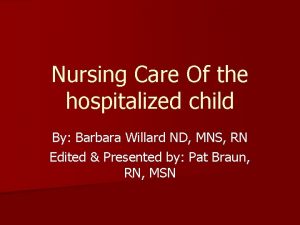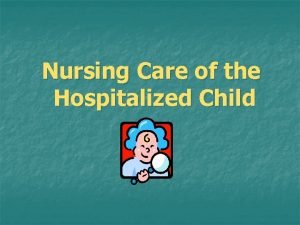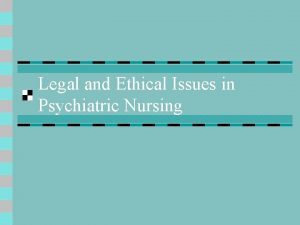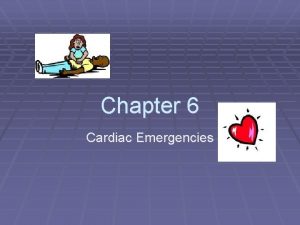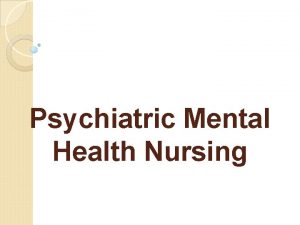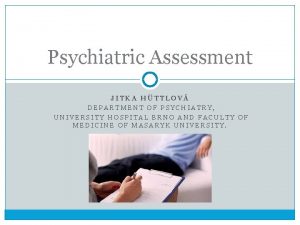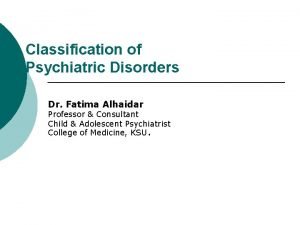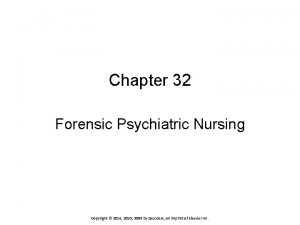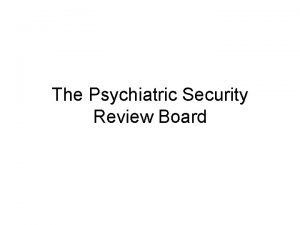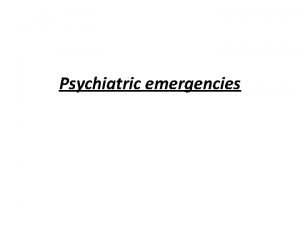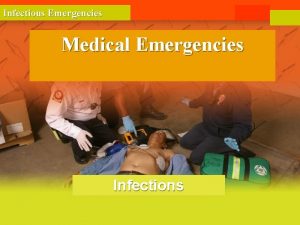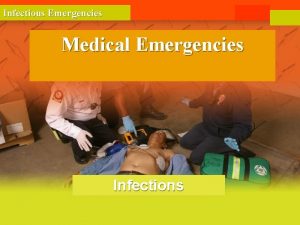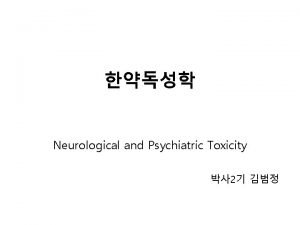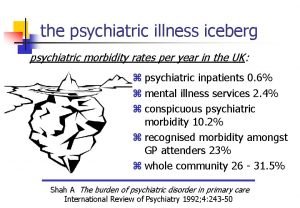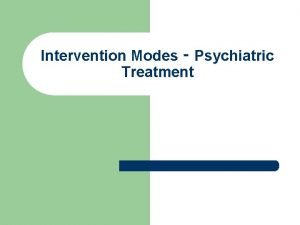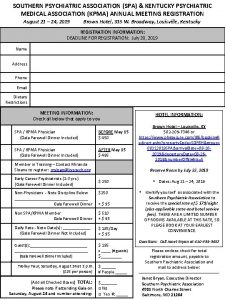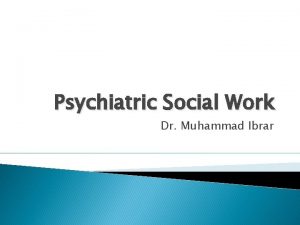Psychiatric Emergencies Who Gets Hospitalized and Who Gets

















- Slides: 17

Psychiatric Emergencies: Who Gets Hospitalized and Who Gets Discharged Nicole Lederman, MD University of New Mexico Department of Psychiatry

Learning Objectives: 1. Overview of Psychiatric Emergency Services 2. Identification of individuals who are appropriate for admission to acute inpatient psychiatric unit 3. Overview of common presentations and interventions in psychiatric emergency room 4. When should a patient be brought to the hospital

UNM Psychiatric Emergency Services

Faces of PES Administration/Clerks Security Mental Health Techs Nurses (Staff and Charge) Physicians (Resident and Attending) Psychiatric Nurse Provider


Events Belongings Secured Vital Signs and initial triage Nurse Evaluation Physician Evaluation

Risk Factors for Suicide and Homicide Fixed and Demographic: male, Caucasian, Native American, adolescent/elderly, separated, homosexual/bisexual, psychiatric dx, previous SA and attempt w/in 12 mo, FH or close associate suicide, h/o physical/sexual abuse, chronic medical co-morbidities, pain, aggressiveness, h/o violence, borderline intellectual functioning Short Term: recent loss/trauma, psych d/c within 12 months, 1 st dx psych illness, worsening of depressive sx, inc use of substances Current: Hopelessness, insomnia, agitation/anxiety, living alone, help rejecting, firearms/ other means Protective: Future oriented, pregnancy/kids, social/family support, lack of previous suicide attempts, absence of SI/HI, willingness to engage in tx, therapeutic alliance, lack of access Determination of Acute Risk and Chronic Risk

Who Gets Admitted? Immediate danger to self or others Suicidality Homicidality Mania Active Psychosis Grave Passive Neglect Poor Insight and Judgment Perceived Benefit from Treatment Least Restrictive Means

Goals of Hospitalization Safety Stabilization Evaluation Medication Management Psychotherapy

Psychiatry and the Law Certificate for Evaluation Voluntary Admission Involuntary Hold Court Commitment

Who Gets Discharged? Medically unstable medical ED Passive suicidal ideation without intent or plan Rapid outpatient follow up Drug Rehab Searching for new provider/medication refills Chronic psychosis

Common Interventions Medication – acute stabilization Supportive Psychotherapy Crisis Counseling Metabolize to Freedom Observation Admission to Inpatient Unit

Outpatient Services Detox/inpatient rehab Tests Medication prescriptions Referral to outpatient providers Family therapy

When should a patient be brought to PES? Is the patient an acute danger to himself or others? Does the patient have a severe mental illness that is not being treated? Is there evidence of intoxication? Medical ED Is there an intervention that is less restrictive that would provide equal benefit to patient?

Interventions in the Field Inquire about outpatient follow up and medication adherence History of violence – ? incarceration? Identification of coping strategies and social support Gathering of collateral information and phone numbers for PES providers Validation, support, non-judgmental approach

Common Presentations 32 yo F h/o AUD biba to UNM ED with BAL >200 reporting suicidal ideations 10 yo M h/o DD, ADHD banging head against wall and threatening to hurt his siblings 55 yo M h/o polysubstance use found walking on tramway barefoot, Urinary Tox Screen positive for opiates, benzodiazepines and methamphetamine 30 yo F h/o unspecified psychosis found outside convenience store passed out later requiring 4 point restraints, spitting, punching and cursing at staff

Common Presentations Cont… 75 yo F h/o Dementia with Behavioral Disturbances with dysuria and inc in aggression 40 yo M h/o Bipolar Disorder kicked off the Greyhound with erratic behaviors, singing to himself 60 yo M history of Diabetes and Hypertension living alone with elevated blood pressures and blood sugars wandering on the streets, urinating on himself 50 year old female with history of Bipolar Disorder Type II, Borderline Personality Disorder and multiple suicide attempts by overdose reporting ingesting a handfull of pills in the setting of partner conflict
 A behavioral crisis is most accurately defined as
A behavioral crisis is most accurately defined as Psychiatric emergency
Psychiatric emergency Nursing care of hospitalized child
Nursing care of hospitalized child Nursing care of hospitalized child
Nursing care of hospitalized child Ethical and legal issues in psychiatric nursing
Ethical and legal issues in psychiatric nursing Lesson 6: cardiac emergencies and using an aed
Lesson 6: cardiac emergencies and using an aed Endocrine and hematologic emergencies
Endocrine and hematologic emergencies Emt chapter 18 gastrointestinal and urologic emergencies
Emt chapter 18 gastrointestinal and urologic emergencies Chapter 28 first aid and emergencies
Chapter 28 first aid and emergencies Psychiatric nursing meaning
Psychiatric nursing meaning Mood mse
Mood mse Mental health nursing process
Mental health nursing process First psychiatric nurse in india
First psychiatric nurse in india Neurosis vs psychosis
Neurosis vs psychosis Cmc psychiatric hospital
Cmc psychiatric hospital Role of psychiatric nurse
Role of psychiatric nurse Psychiatric security review board
Psychiatric security review board Psychiatric rehabilitation
Psychiatric rehabilitation


